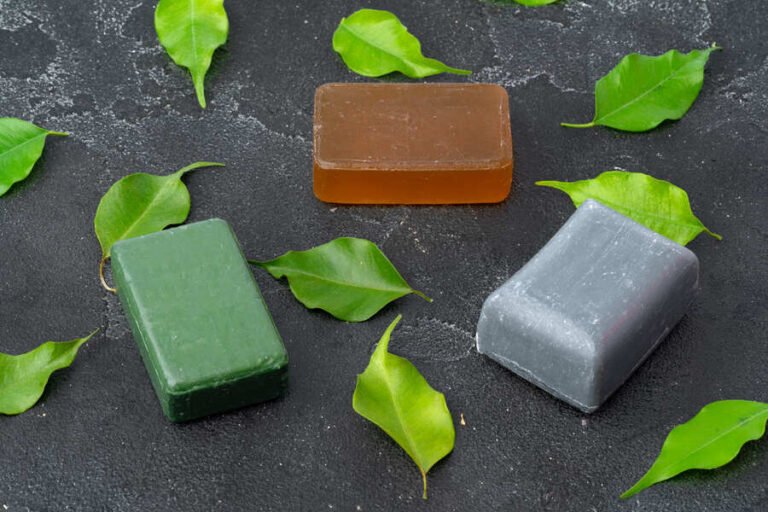Are you tired of your current hairstyle and ready for a change? Well, look no further! This article will introduce you to 11 different types of wigs that will give you the freedom to express yourself and embrace a whole new level of style.
From lace wigs to human hair wigs, we've got you covered. So, get ready to unleash your inner fashionista and discover the perfect wig that matches your personality, preferences, and budget.
It's time to make a bold statement and rock a fabulous new look!
Key Takeaways
- When buying wigs, consider factors such as length, texture, face shape, color, and cap size.
- Different types of wigs include thin skin wigs, lace wigs, monofilament wigs, and machine-made wigs.
- Lace front wigs and capless wigs are ideal for beginners as they do not require adhesives and are easy to style.
- Proper wig maintenance includes using specialized products, avoiding heat styling tools on synthetic wigs, and regularly cleaning the wig cap for hygiene.
Thin Skin Wig
When choosing a wig, you should consider trying out a thin skin wig. Thin skin wigs, also known as poly wigs or PU skin wigs, have a thin polyurethane scalp base that mimics the appearance of natural skin. One of the advantages of thin skin wigs is their ability to provide a seamless and natural look, especially at the hairline. Unlike lace front wigs, which have a sheer mesh lace base, thin skin wigs offer a more realistic front hairline that's virtually undetectable.
Additionally, thin skin wigs have a soft and comfortable texture, making them a popular choice for those seeking a natural and liberating hair replacement option.
Lace Wigs
If you're looking for a popular choice in wigs, lace wigs are a great option. They're known for their natural look and versatility in styling. Here are some pros and cons of lace wigs:
Pros:
- Natural look: The sheer mesh lace base of lace wigs creates a seamless and undetectable hairline, giving the appearance of natural hair growth.
- Versatile styling: Full lace wigs allow you to part your hair in any direction and style it in various updos or ponytails.
- Breathable and lightweight: The lace material allows for better airflow, making lace wigs comfortable to wear for extended periods.
Cons:
- Higher maintenance: Lace wigs require extra care and attention, such as regular washing and conditioning, to keep them in good condition.
- Fragility: The delicate lace material can be prone to tearing if not handled with care.
- Higher cost: Lace wigs tend to be more expensive compared to other types of wigs.
Tips for styling lace wigs:
- Protect your natural hair: Before applying a lace wig, make sure to protect your natural hair by braiding or using a wig cap.
- Use adhesive correctly: If using adhesive, follow the instructions carefully to ensure a secure and natural-looking fit.
- Customize the lace: Trim the excess lace to match your hairline for a seamless and natural appearance.
With these tips and knowledge of the pros and cons, you can confidently choose and style lace wigs for a liberating and stylish look.
Monofilament Wigs
If you're looking for a natural look and versatile wig option, consider choosing a monofilament wig. Monofilament wigs have a cap construction where each hair strand is individually hand-tied, providing a realistic scalp appearance and allowing for movement and versatility.
One of the advantages of monofilament wigs is that they're suitable for sensitive scalps or hair loss, as the soft cap material is gentle on the skin. However, it's important to note that monofilament wigs tend to be more expensive compared to other wig types.
When it comes to styling monofilament wigs, you can use heat styling tools to curl or straighten the hair, just like you'd with natural hair. Additionally, you can part the hair in any direction, giving you the freedom to change up your style.
Machine-Made Wigs
If you're on a budget and looking for an affordable and widely available wig option, consider choosing a machine-made wig. These wigs are made by a machine, which means they're mass-produced and can be found in a variety of styles and colors.
Here are some pros and cons of machine-made wigs to help you make your decision:
Pros of machine-made wigs:
- Affordable: Machine-made wigs are often more budget-friendly compared to other types of wigs.
- Widely available: You can easily find machine-made wigs at beauty supply stores or online.
- Low maintenance: These wigs require minimal styling and upkeep, making them convenient for everyday wear.
Cons of machine-made wigs:
- Less versatile in styling: Machine-made wigs may have limited styling options compared to other types of wigs.
- Breathability and comfort: Some machine-made wigs may not be as breathable or comfortable to wear for extended periods.
Tips for styling lace front wigs:
- Use wig adhesive or tape to secure the wig along the hairline for a natural look.
- Trim the lace to match your hairline for a seamless blend.
- Style the wig using heat tools on low or synthetic-friendly settings for versatility.
Mono Wig
When choosing a wig, you may consider a mono wig, which offers a natural look and versatile styling options.
Mono wigs are constructed using a monofilament cap, which means that each hair strand is individually hand-tied onto a fine, sheer material. This creates the appearance of natural hair growth and allows for realistic movement.
The monofilament cap also provides a comfortable fit and is suitable for those with sensitive scalps or hair loss.
In terms of materials, mono wigs are available in both synthetic and human hair options. Synthetic mono wigs are more affordable and require less maintenance, while human hair mono wigs offer the most natural look and can be styled with heat tools.
100% Hand-Tied Wig
Looking for ultimate comfort and natural movement in a wig? Consider the % hand-tied wig option. Hand-tied wigs are meticulously crafted with each individual hair strand hand-tied to the cap, creating a realistic and breathable wig.
Here are some advantages of hand-tied wigs:
- Natural Appearance: The hand-tied construction allows the hair to move freely, giving the wig a natural look and feel. It mimics the way natural hair grows from the scalp, making it virtually indistinguishable.
- Comfortable Fit: Hand-tied wigs are lightweight and have a stretchable mesh cap, providing a secure and comfortable fit. You can wear them for long periods without any discomfort.
- Versatility: Hand-tied wigs offer versatility in styling. You can part the hair in any direction and create different hairstyles, just like with your own hair.
Tips for choosing the right hand-tied wig:
- Consider the hair length and texture that suits your style and preference.
- Choose a wig cap size that matches your head measurements for a perfect fit.
- Select a color that complements your skin tone and enhances your overall look.
With a hand-tied wig, you can embrace liberation and confidently rock a beautiful and natural-looking hairstyle.
Combo Wigs
You can explore the versatility and convenience of combo wigs, which combine the benefits of different wig types. Combo wigs are a great option for those who want the best of both worlds.
With combo wigs, you can have the natural look and feel of human hair along with the durability and low maintenance of synthetic hair. These wigs give you the freedom to style your hair in different ways, whether you want to curl it, straighten it, or wear it up in a ponytail.
The combination of human hair and synthetic hair also provides a more affordable option compared to full human hair wigs. However, it's important to note that synthetic hair may not have the same longevity as human hair and may require more care and maintenance.
Capless Wig
If you want a wig that's lightweight and breathable, consider opting for a capless wig. These wigs are designed with open wefting, which allows for better air circulation and a more comfortable wearing experience.
Here's how you can choose the right capless wig for you:
- Consider your hair type: Capless wigs are suitable for all hair types, whether you have straight, wavy, or curly hair.
- Determine the cap size: Measure your head to find the right cap size for a secure fit. Capless wigs come in different sizes to accommodate different head sizes.
- Pros and cons of thin skin wigs: Thin skin wigs, also known as poly wigs or PU skin wigs, have a thin polyurethane scalp base that provides an undetectable front hairline and a soft touch. However, they may not be as durable as other wig types and require extra care.
With these considerations in mind, you can confidently choose the perfect capless wig that suits your style and needs.
Basic Synthetic Wig
When choosing a wig, consider the benefits of a basic synthetic wig for an affordable and low-maintenance option.
Basic synthetic wigs are constructed using machine-made methods, which make them readily available and budget-friendly. They're made from synthetic materials that mimic the appearance and feel of natural hair.
The quality of a synthetic wig can vary, with higher-quality options offering a more realistic look and feel. However, even basic synthetic wigs can be styled and shaped to suit your desired look.
One advantage of synthetic wigs is that they're easy to care for, requiring minimal styling and maintenance. They also offer a wide range of colors and styles to choose from, allowing you to express your unique personality and style.
While they may not have the same longevity as human hair wigs, basic synthetic wigs provide an accessible and versatile option for those seeking an affordable and hassle-free wig experience.
Heat-Friendly Synthetic Wigs
Looking for a versatile and easy-to-style option? Consider heat-friendly synthetic wigs for a realistic look and the ability to use heat styling tools. These wigs are made from high-quality synthetic fibers that can withstand heat up to a certain temperature, allowing you to curl, straighten, or even crimp your wig for a personalized look.
Here are some styling tips, care and maintenance for heat-friendly synthetic wigs:
- Use heat styling tools: You can use a curling iron, straightener, or even a blow dryer on low heat settings to style your heat-friendly synthetic wig. Just be sure to avoid excessive heat to prevent damage to the fibers.
- Style with caution: When using heat styling tools, always start with a low temperature and gradually increase if needed. Avoid direct heat on the wig cap and focus on the strands for a natural look.
- Care and maintenance: To maintain the quality of your heat-friendly synthetic wig, use a specialized wig shampoo and conditioner. Gently detangle the wig using a wide-tooth comb or wig brush. Avoid brushing the wig when it's wet to prevent shedding. Properly store the wig in a wig stand or a breathable bag when not in use.
With heat-friendly synthetic wigs, you have the freedom to experiment with different hairstyles and looks while maintaining the natural appearance of your wig. Just remember to follow the styling tips and care instructions for long-lasting enjoyment.
Human Hair Wigs
When choosing a wig, consider the benefits of human hair wigs as they provide a natural look and feel. Human hair wigs are made from real human hair, which gives them a more realistic appearance compared to synthetic wigs. They can be styled and dyed just like your own hair, offering endless possibilities for customization. Human hair wigs also tend to be more durable and long-lasting, making them a great investment.
However, there are a few drawbacks to consider. Human hair wigs require more maintenance and care compared to synthetic wigs. They can be more expensive and may require professional styling. To care for human hair wigs, it's important to use specialized shampoos and conditioners, avoid excessive heat styling, and store them properly when not in use.
With proper care, human hair wigs can last for a long time and provide a natural and versatile look.
Frequently Asked Questions
Are There Any Special Care Instructions for Thin Skin Wigs?
When caring for thin skin wigs, it's important to use special adhesives for secure attachment. Cleaning techniques involve gentle washing with specialized wig shampoos and regular cleaning of the wig cap for hygiene.
How Long Do Lace Front Wigs Typically Last?
Lace front wigs typically last for several months with proper care. Pros include natural hairline and versatility, while cons include extra care and potential damage from heat styling. Clean and maintain with specialized wig shampoos for longevity.
Can Monofilament Wigs Be Styled With Heat?
Yes, monofilament wigs can be styled with heat. It offers versatility for curling or straightening. However, excessive heat can damage the wig fibers. Use a low heat setting and protect the hair with heat protectant products.
Do Machine-Made Wigs Come in Different Cap Sizes?
Yes, machine-made wigs come in different cap sizes. It's important to measure your head for accurate sizing. This ensures a comfortable fit that won't slip or feel too tight.
Are Human Hair Wigs More Expensive Than Synthetic Wigs?
Human hair wigs are generally more expensive than synthetic wigs. They offer a more natural look and feel, can be styled with heat, and have longer lifespans. However, synthetic wigs are more affordable and require less maintenance.
Conclusion
So there you have it, a comprehensive guide to the different types of wigs available.
From the natural-looking Thin Skin Wig to the versatile Lace Wigs and the durable Machine-Made Wigs, there's something for everyone.
Whether you prefer the ease of a Basic Synthetic Wig or the luxurious feel of Human Hair Wigs, you can confidently choose the perfect wig to suit your style and lifestyle.
So go ahead, embrace the world of wigs and unlock a whole new level of versatility and style.
Remember, when it comes to wigs, the sky's the limit!







